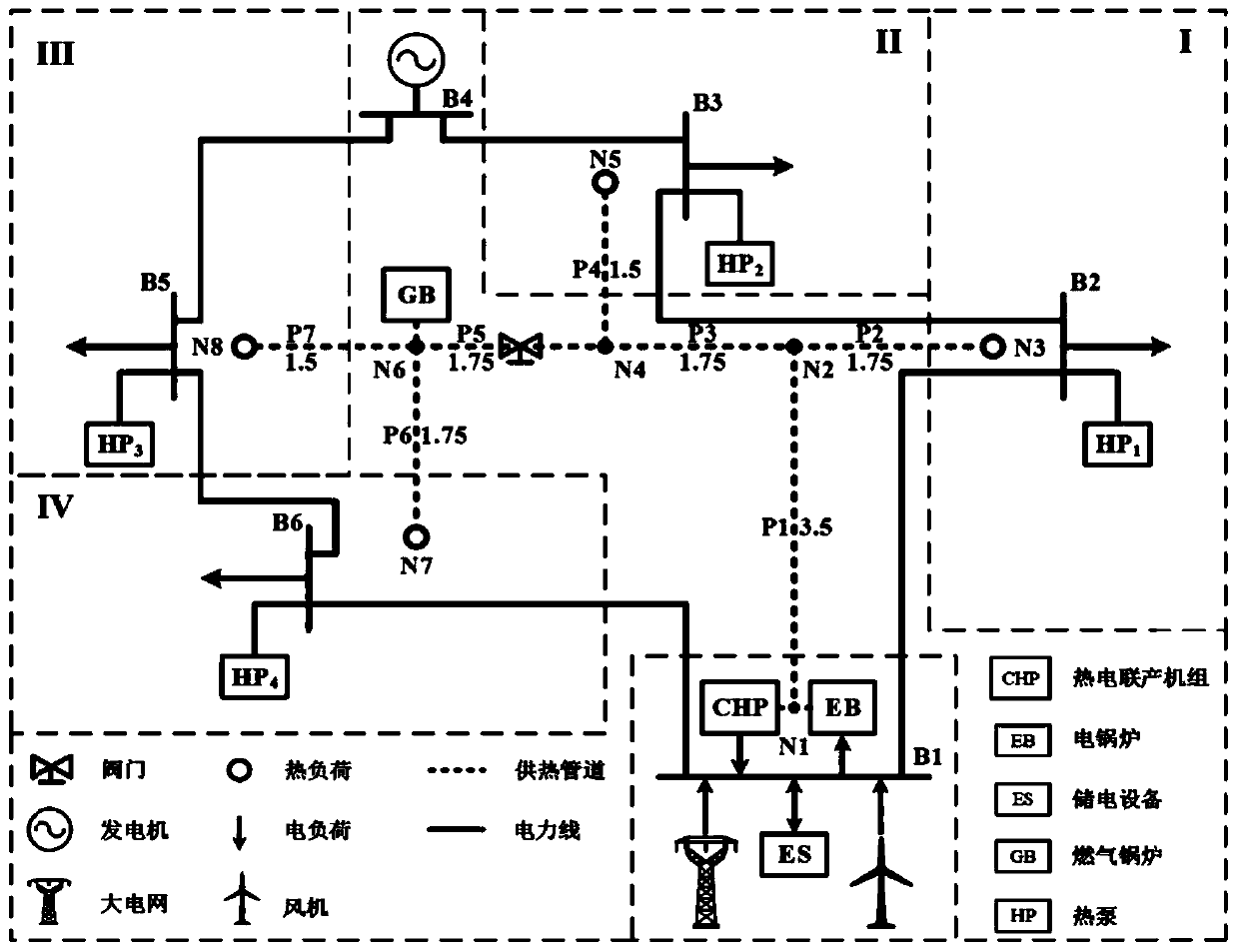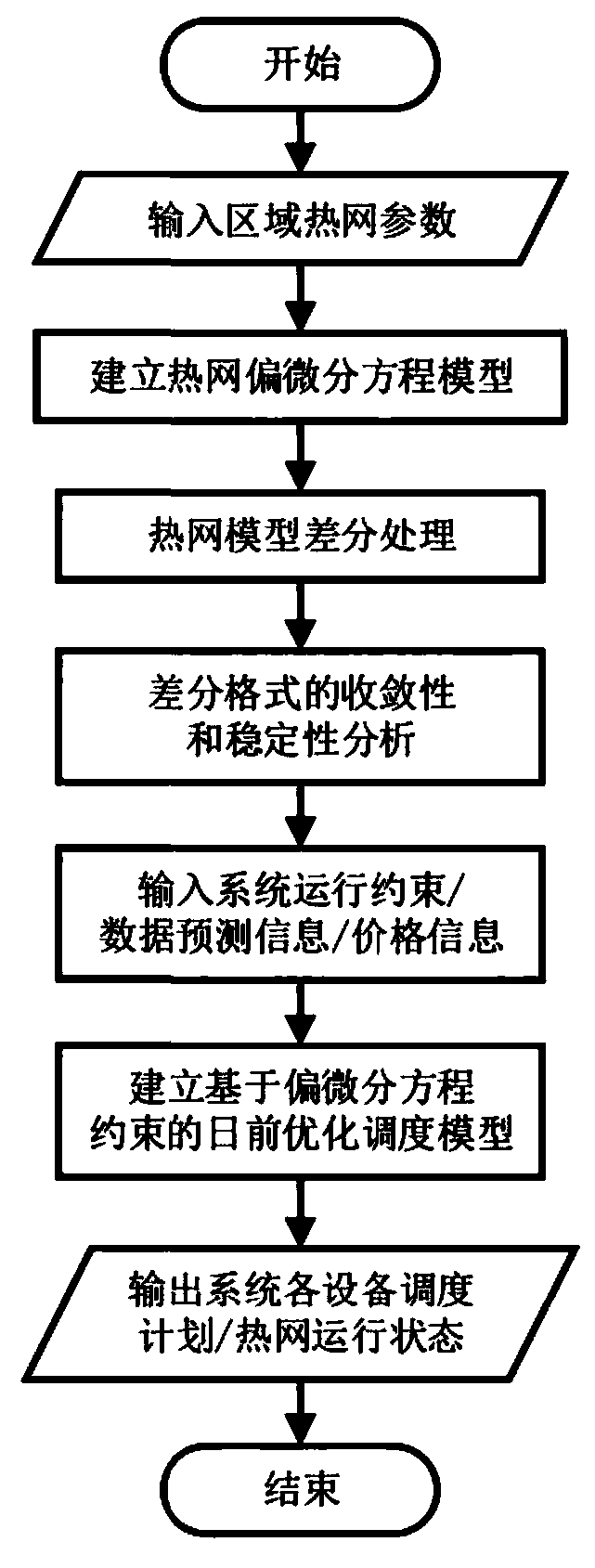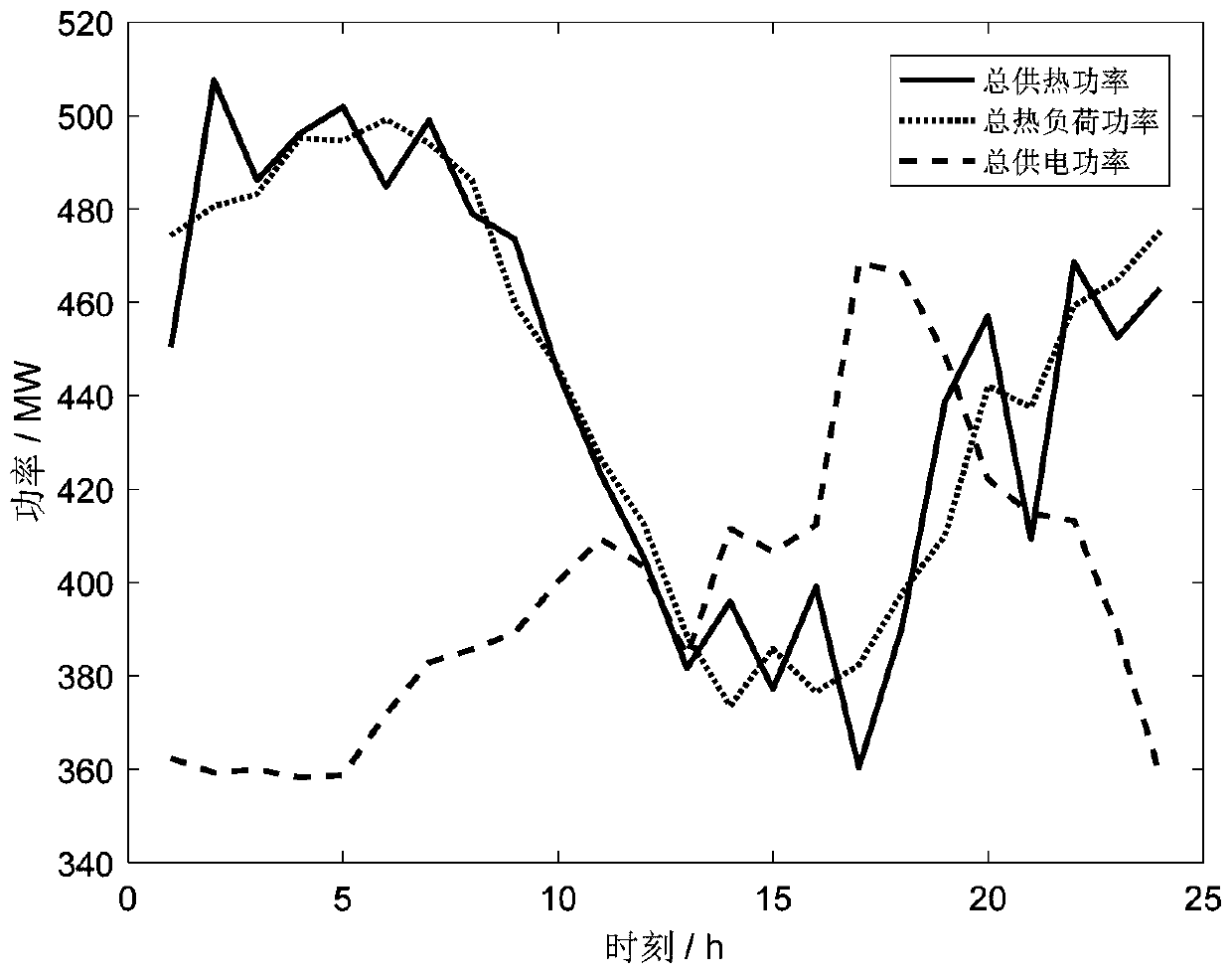A combined heat and power generation system day-ahead scheduling method based on heat supply network partial differential equation constraint
A partial differential equation and cogeneration technology, which is applied in the fields of instruments, complex mathematical operations, data processing applications, etc., can solve the problems of complex heat transfer characteristics, difficult system optimization scheduling, and difficulty in reflecting the transient heat transfer characteristics of the heat network. achieve the effect of improving the economy
- Summary
- Abstract
- Description
- Claims
- Application Information
AI Technical Summary
Problems solved by technology
Method used
Image
Examples
Embodiment Construction
[0016] The drawings constituting a part of the present invention are used to provide a further understanding of the present invention, and the schematic embodiments and descriptions of the present invention are used to explain the present invention, and do not constitute an improper limitation of the present invention.
[0017] Such as figure 1 As shown, the combined heat and power system of this embodiment is composed of tie lines, steam extraction and condensing thermoelectric units, generators, electric boilers, gas boilers, heat pumps, fans and energy storage power stations. In this system, the combined heat and power unit undertakes the heating base load, the electrical power deficit is compensated by generators, grids, fans and energy storage power stations, and the thermal power deficit is compensated by electric boilers, gas boilers and heat pumps. The system is connected to other power grids through a connection line. It can purchase electricity from the grid or sell ...
PUM
 Login to View More
Login to View More Abstract
Description
Claims
Application Information
 Login to View More
Login to View More - R&D
- Intellectual Property
- Life Sciences
- Materials
- Tech Scout
- Unparalleled Data Quality
- Higher Quality Content
- 60% Fewer Hallucinations
Browse by: Latest US Patents, China's latest patents, Technical Efficacy Thesaurus, Application Domain, Technology Topic, Popular Technical Reports.
© 2025 PatSnap. All rights reserved.Legal|Privacy policy|Modern Slavery Act Transparency Statement|Sitemap|About US| Contact US: help@patsnap.com



